Tasty, moist pork wrapped with half-soft, half-crispy dough, Shanghai Sheng Jian Bao (生煎包, pan-fried pork buns), traditionally served as breakfast, make a great party food.
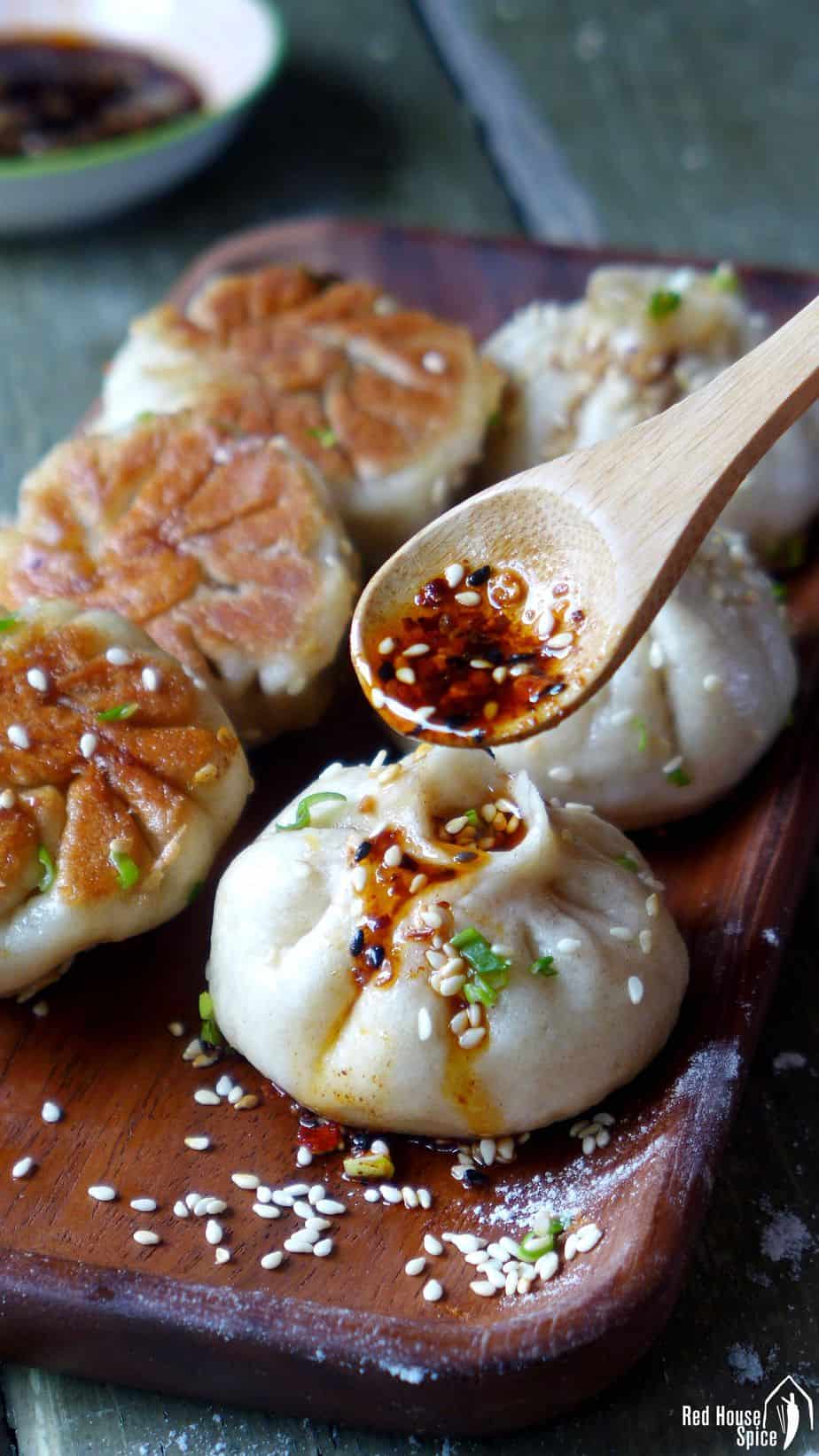
Like many modern cities, Shanghai is full of wonderful choices when it comes to food. I had numerous scrumptious meals during my trips there.
The diversity and creativity of this giant city’s culinary profile was quite impressive. However, the most memorable meal I had there was at a humble, busy breakfast stall which served the local speciality: Sheng Jian Bao/生煎包 (pan-fried pork buns).
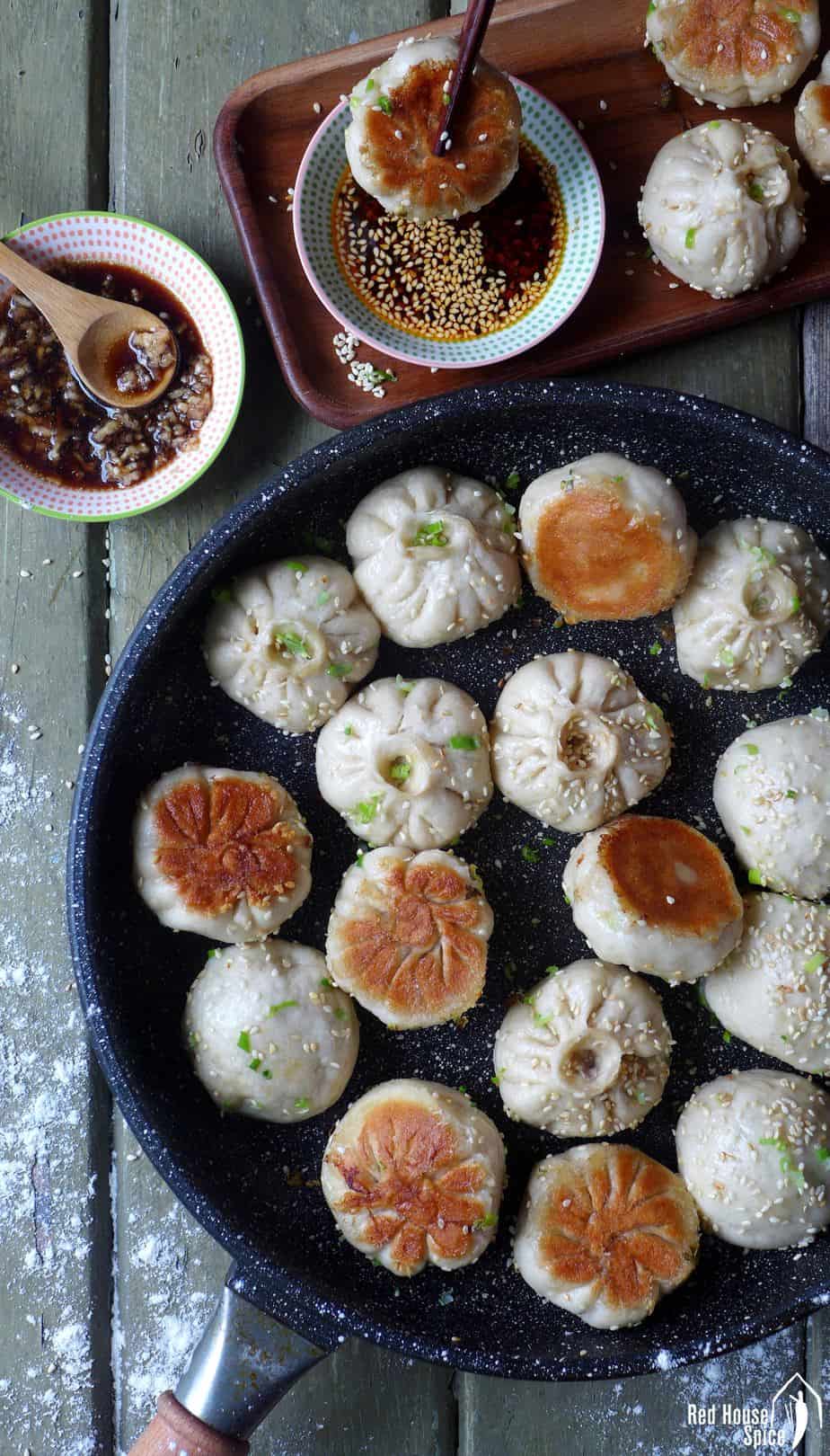
Sheng Jian Bao/生煎包 (aka Sheng Jian Mantou/生煎馒头) is a type of Chinese pan fried bao buns. The wrapper is made from yeast dough and the filling contains minced pork, spring onion and various seasonings. It’s quite small in size, similar to a golf ball or even smaller.
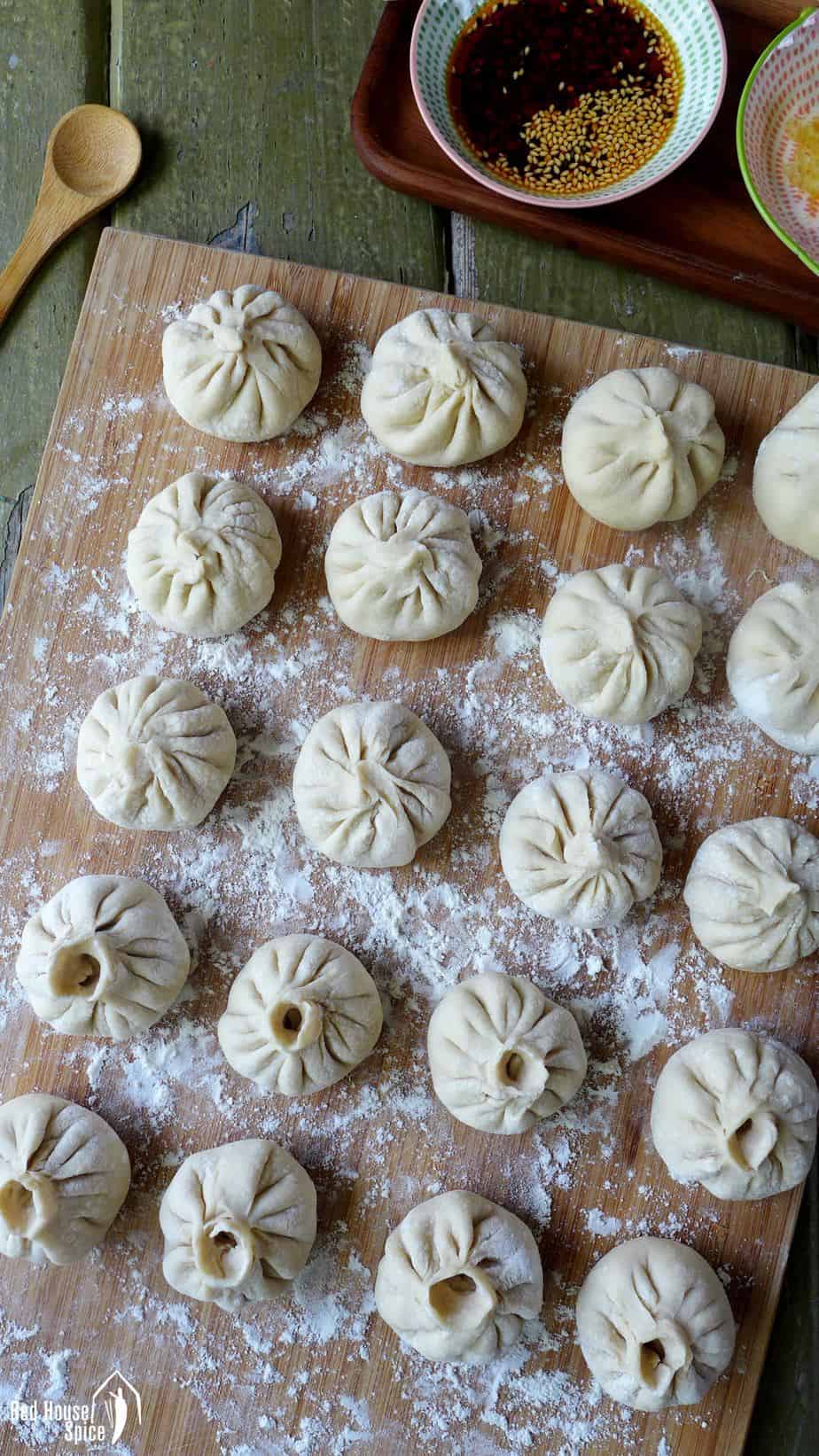
In Shanghai, Sheng Jian Bao/生煎包 (pan-fried pork buns) are traditionally served as breakfast at little cafes and street stalls. They are often cooked in a large pan in front of the queueing customers.
Truly fresh and super tasty, they are simply irresistible! The wrapper has a lovely soft texture with a golden, crispy base . The filling is very flavoursome and moist.
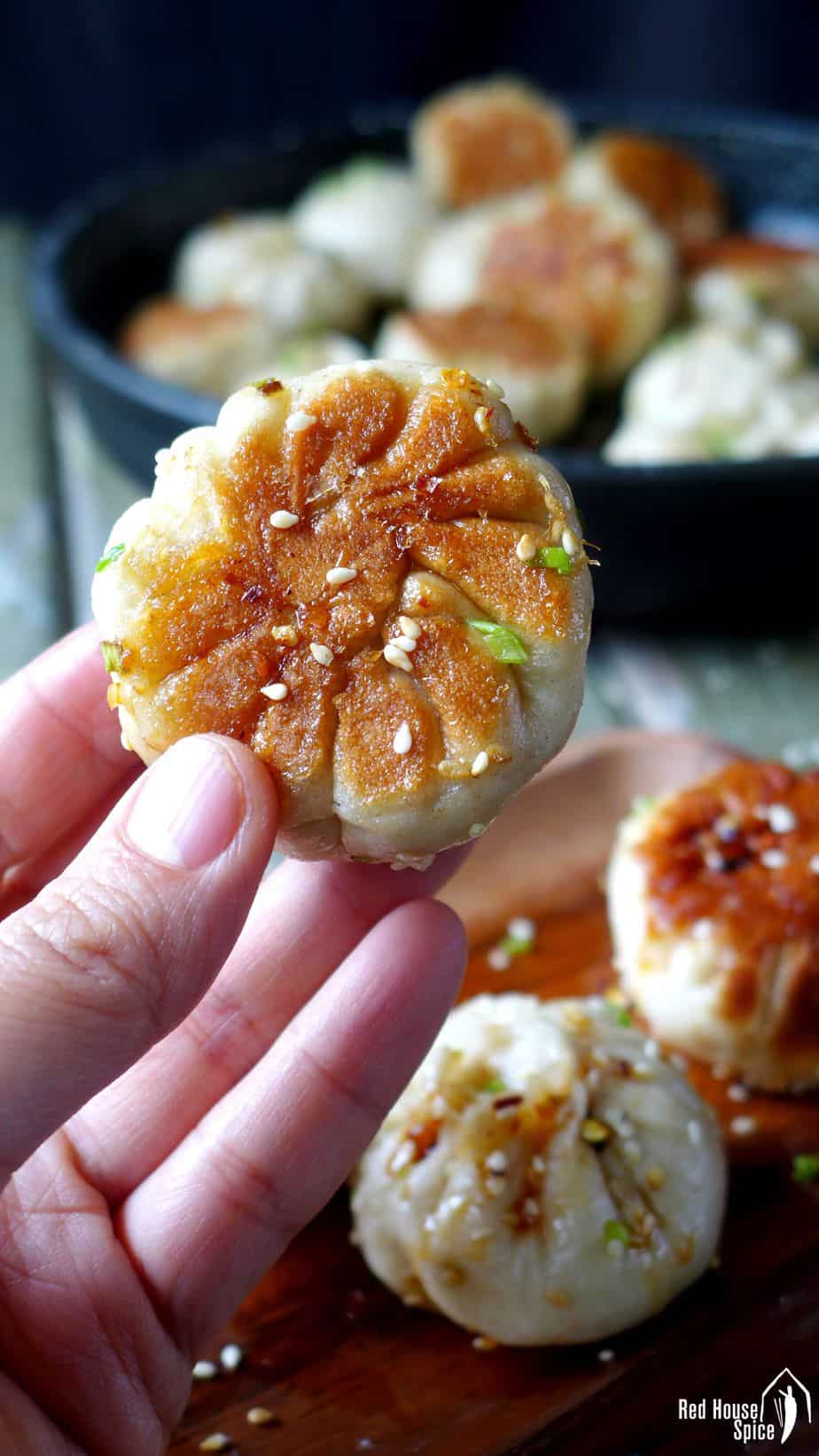
A few years ago, I got a chance to learn the technique of making Sheng Jian Bao/生煎包 (pan-fried pork buns) from a Shanghainese friend. I found it rather simple as it was very similar to how we cook Shui Jian Bao (水煎包, means water-fried buns literally, often vegetarian) in the North-west of China where I grew up. There are five steps to follow:
1. Make the dough. It’s a type of simple yeast dough used in many Chinese dishes, like the one I shared earlier: Spring onion flatbread.

2. Mix the filling. The minced pork is seasoned with spring onion, ginger, light soy sauce, rice wine, Sichuan pepper and sesame oil, etc. In order to make the cooked filling soft and moist, you need to gradually add quite a bit of water (or even better, chicken stock) to the mixture. Stir constantly until no more liquid can be seen.

3. Shape the buns. In this part, you might find it a bit intimidating to seal the buns. It is time consuming if you are not familiar with the folding technique. But I’m sure you’ll soon get the hang of it (please refer to the images above for instructions).
4. Fry the buns. Firstly, crisp the bottom part of the buns in hot oil. Then pour water into the pan and cover with a lid. The steam will help to cook through pretty quickly. A tip: You can either put the folded side facing up or down (As shown in the photos below, I cooked a panful in two ways). Just remember to securely seal the top if you prefer the latter to avoid any juice leaking from the filling.

5. Sprinkle the garnish. I particular like this final touch. Sprinkle finely chopped spring onion and toasted sesame seeds onto the buns at the very last stage of cooking. The remaining steam in the pan helps these sprinkles to stick onto the wrappers. Not only does it looks pretty, it also adds extra flavour to the buns.
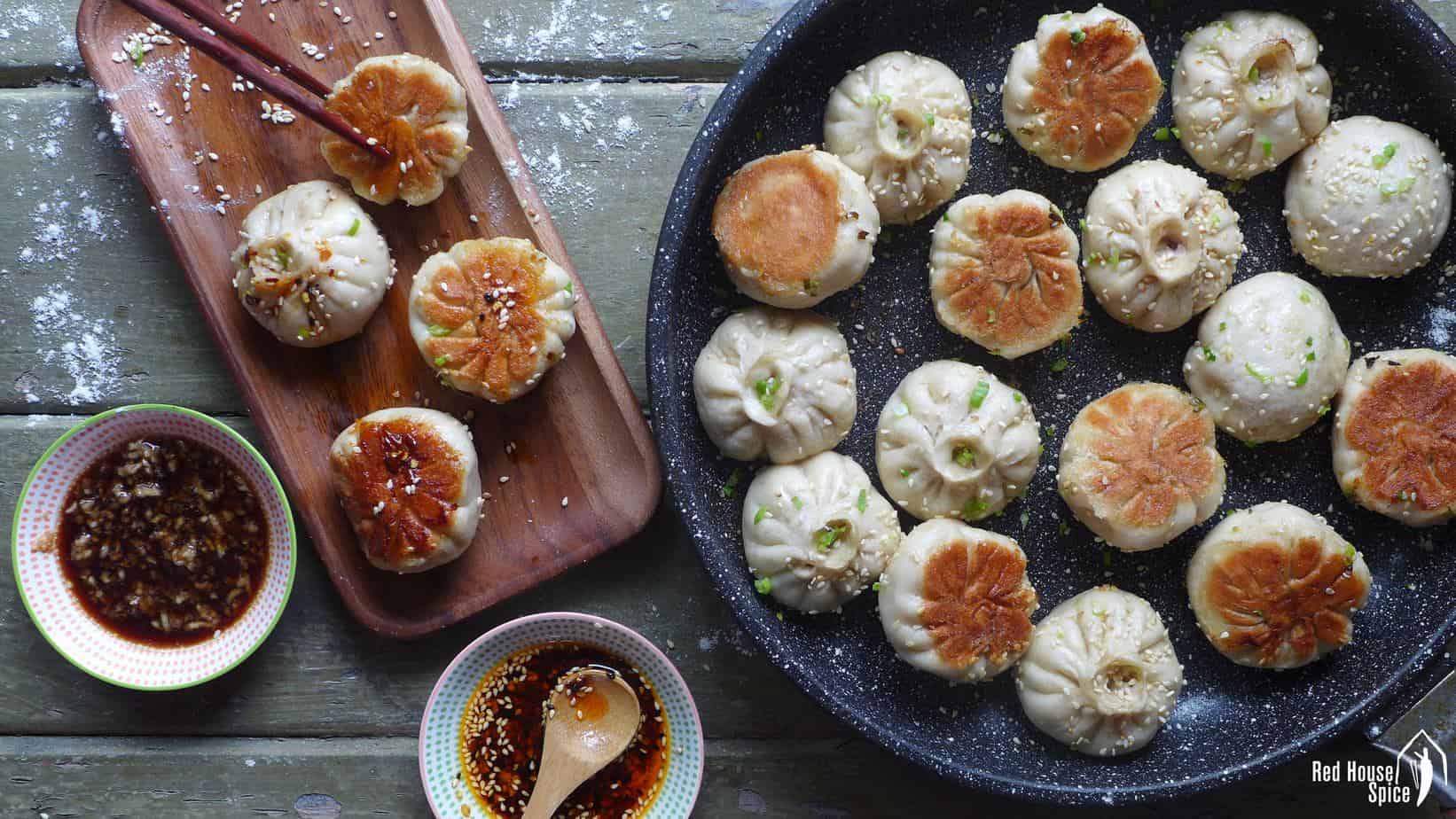
I often make Shanghai Sheng Jian Bao/生煎包 (pan-fried pork buns) for parties. It’s a perfect finger food that’s loved by young and old. If you wish, prepare some dipping sauce on the side. For example, you can use the dressing recipes for dumplings, etc.. Don’t forget to add a dash of homemade chilli oil if you fancy spicing up the buns.
Other bao recipes
Looking for more bao recipes? here are some popular ones to try:
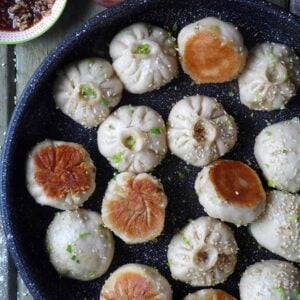
Sheng Jian Bao: Pan-fried pork buns (生煎包)
Ingredients
For the wrappers
- 250 g all-purpose flour - about 2 cups (see note 1)
- 1 teaspoon sugar
- 1 teaspoon dried instant yeast - see note 2
- 140 ml lukewarm water - about 9 tbsp
For the filling
- 250 g minced pork - 9oz
- 2 tablespoon spring onion - finely chopped
- ½ tablespoon ginger - minced
- 2 teaspoon light soy sauce
- ½ teaspoon Shaoxing rice wine
- ½ teaspoon sesame oil
- ¼ teaspoon salt
- 1 pinch ground Sichuan pepper - or Chinese five-spice powder
- 5 tablespoon water - or chicken stock
For frying
- 1 tablespoon cooking oil
- 240 ml water - about 1 cup
For garnishing
- Toasted sesame seeds
- Spring onion - finely chopped
Instructions
Prepare the dough
- In a large bowl, mix flour, yeast and sugar. Pour in water little by little while stirring with a pair of chopsticks (or a fork).
- Then knead with your hand until a smooth, elastic dough forms (see note 3). Cover the bowl with a wet kitchen towel.
- Leave to rise in a warm place until double in size. It will take between 40 minutes to 1.5 hours depending on the room temperature.
Mix the filling
- Put all the ingredients for the filling (except for water/stock) into a large bowl.
- Swirl constantly in the same direction while gradually adding water/stock spoon by spoon into the mixture.
Shape the buns
- Knead the dough on a floured work surface until it goes back to its original size.
- Divide it into 20 equal portions. Roll each piece into a disk-like wrapper.
- Hold the wrapper in the palm of one hand. Place some filling in the middle. Use the other hand to fold the edge anticlockwise by pinching with thumb and index finger until the bun is completely sealed (please refer to the images above).
- Leave to rest for 15 minutes before frying.
Fry the buns
- Heat up oil in a frying pan over a high heat. Place in the buns (see note 4 & 5).
- When the bottom part becomes golden brown, pour in water then cover with a lid.
- Uncover when the water evaporates completely. Sprinkle sesame seeds and spring onion over.
- Cook another 30 seconds or so to crisp up.
NOTES
NUTRITION
NUTRITION DISCLOSURE: Nutritional information on this website is provided as a courtesy to readers. It should be considered estimates. Please use your own brand nutritional values or your preferred nutrition calculator to double check against our estimates.


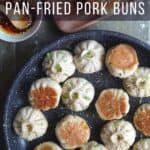
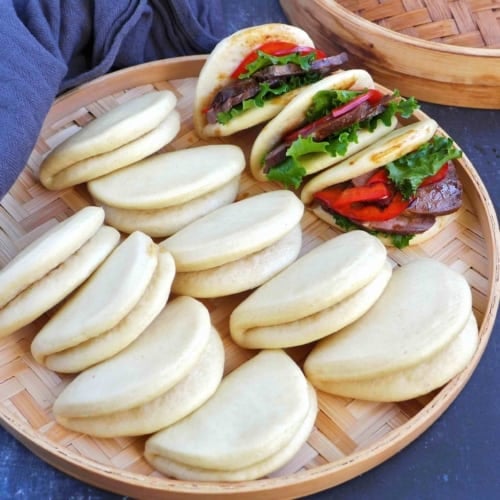
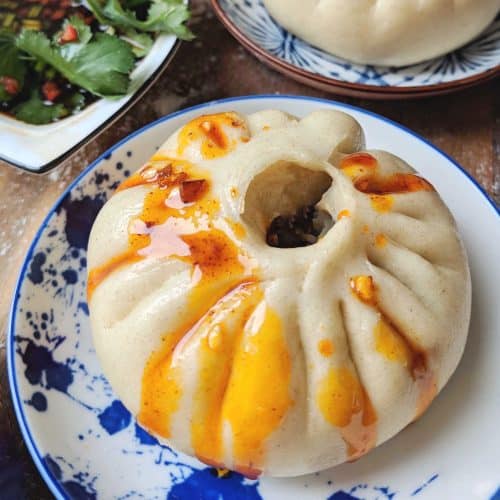
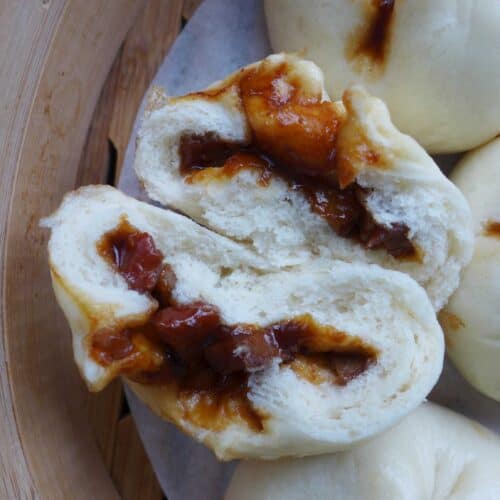
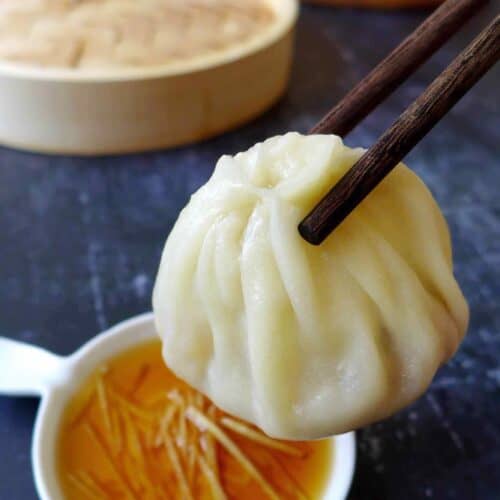
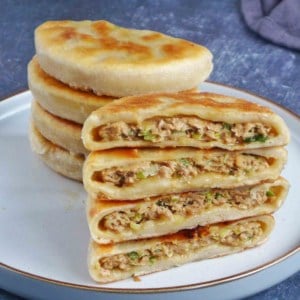
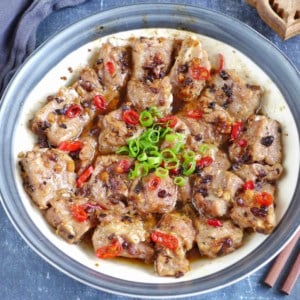


Delicious! Thank you
Will definitely be adding these to our meal favourites.
That’s great to hear Julie!
Excellent recipe! I had leftover dumpling filling so I used that as the filling for the baos. My shaping skills need more practice but I will definitely make again with your filling recipe!
Great to know you enjoyed my recipe with leftover filling. Yes, try my Sheng Jian Bao filling next time!
These look amazing! Going to make them this week. Can you freeze the buns before cooking?
If you’d like to freeze uncooked buns, I’d recommend you use the yeast+baking powder method to make the dough (found in my post on Bao Buns), instead of the traditional yeast only method introduced in this recipe. Make the dough then assemble the buns right away. Rest them for 30 minutes then freeze. Pan-fry as usual without defrosting. Hope this is clear.
Thank you!!
This is the first time I make any sort of buns, they looked absolutely awful, but gosh the taste was AMAZING.
I will definitely be making them again and hopefully with time they will look like yours too!
Glad you enjoyed eating them Shany! I’m sure you’re going to master the folding technique after a few more practice.
Really tasty, enjoyed by all of the family. I missed the water/stock by mistake so I’ll have to try again soon, but it was still delicious. Thanks for the recipe.
Hope you’ll enjoy them even more the next time!
Turned out perfect and delicious.
Will definitely make this again.
Thank you for trying out my recipe Lin!
What a wonderful recipe! Easy to follow and the results were delicious. Every recipe I’ve tried from Red House Spice has been a success.
I made a few changes to the filling to make it for some vegetarian friends. I substituted the ground pork with Impossible meat alternative. I also added some finely shredded carrot and some cooked, chopped glass noodles to the other filling ingredients.
I wanted slightly larger buns so I divided the dough into 16 instead of 20 pieces, using the same amount of water for steaming. It turned out perfect! It was so good I don’t think anyone would be able to tell it was not actually pork. I’m totally making this again. Yum
Happy to know my recipe worked well for you Kat! It’s great that you shared your improvised filling idea. Other readers might find it helpful.
Hello Wei
I’ve tried the fried version. Last night I tried the steamed version. Thanks to your readers who asked about that so I followed your answer and the link to steamed bao. My partner and I agreed “This is the one!” I tried my bread machine to make tthe dough. I think my arthritic hands do a better job! It’s still a work in practice tho.
These steamed pork bao were served dressed with your homemade chilli oil, toasted sesame seeds and spring onions. Superb!
Thanks for a great meal! Eight more cooked buns are resting in the fridge. They will make a great entree tonight!
That’s wonderful to hear!